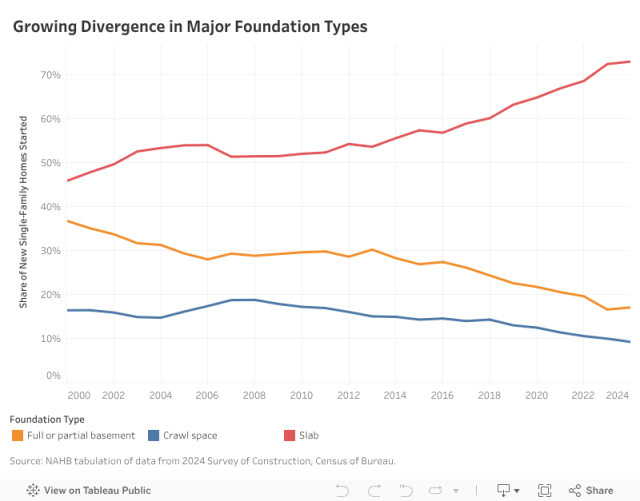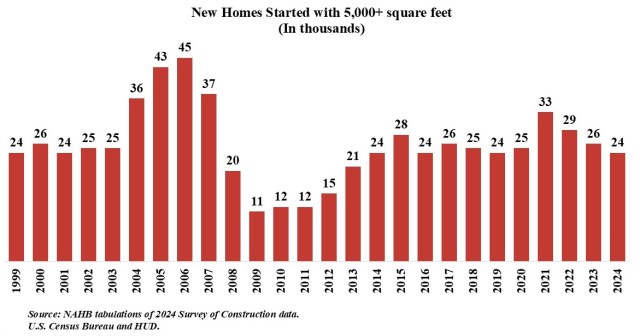Single-Family Homes Are Built Faster in 2024
Na Zhao2025-09-22T09:15:57-05:00Building a new single-family home took less time in 2024 compared to the previous two years. On average, it now takes 9.1 months from start to finish. That includes 1.4 months for authorization to start construction and another 7.6 months to finish construction. Data from the Census Bureau’s Survey of Construction shows that single-family construction timelines have shortened as supply chain challenges have eased after the pandemic. However, it is still almost two months longer than the average completion time in 2015. The extra time is largely attributable to a more stringent regulatory environment, elevated mortgage rates, and a shortage of skilled labor. Among all single-family houses completed in 2024, homes built for sale required the shortest amount of time, 7.6 months from obtaining building permits to completion. Meanwhile, homes built by owners required the longest time, 15.1 months. Homes built by hired contractors took about 12 months, and homes built-for-rent took about 12.5 months from authorization to completion. The chart below illustrates that permit-to-completion time differs across home sizes. The smallest single-family homes, under 1,200 sq. ft., required 14.2 months to finish, relatively longer than every other size homes except those over 5,999 sq. ft. This prolonged period is primarily because half of these smaller homes are constructed specifically for rental purposes, which typically takes longer building time from authorization. In contrast, homes ranging from 1,200 to 3,999 sq. ft. are built at the average building time, typically around 9 months. As the size increases beyond 4,000 sq. ft., there is a noticeable upward trend in completion times. Homes with 4,000-4,999 sq. ft. take about 10.7 months, while those between 5,000- 5,999 sq. ft. extend to around 14 months. Homes over 6,000 sq. ft. take the longest to build, requiring almost 16 months from permit to finish. The average time from authorization to completion also varies across divisions. The division with the longest duration was the Middle Atlantic (13.7 months), followed by New England (13.1 months), the Pacific division (10.8 months), the Mountain division (10 months), and the East North Central division (9.4 months) in 2024. These five divisions exceeded the nation’s average of 9.1 months. The shortest period, 7.8 months, is registered in the South Atlantic division. The average waiting period from permit to construction start varies from the shortest time of 0.9 months in the East North Central to the longest of 2.1 months in the Pacific division. The SOC also collects additional information for houses built for sale, including a sale date when buyers sign sale contracts or make a deposit. Looking at single-family homes built for sale and completed in 2024, 15.2% were sold before construction started, 33% sold while under construction, 17% sold during the month of completion, and 27% sold after completion. The share of completed houses remaining unsold was 7.8% at point of survey. Discover more from Eye On Housing Subscribe to get the latest posts sent to your email.





